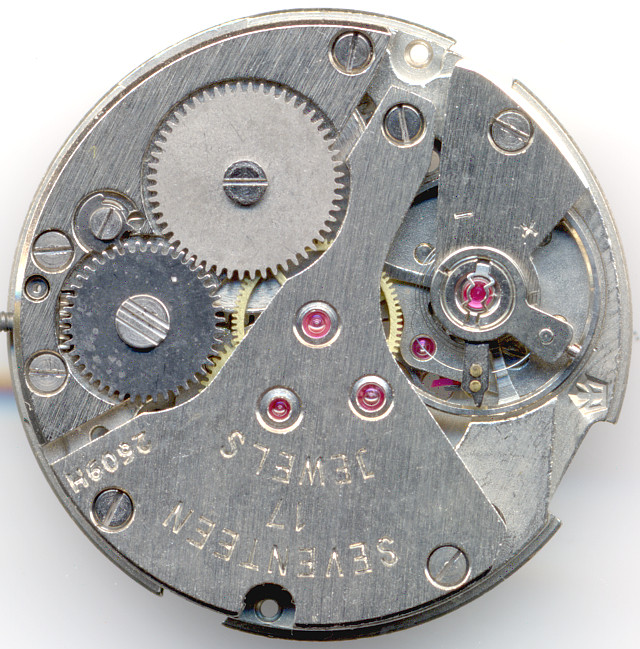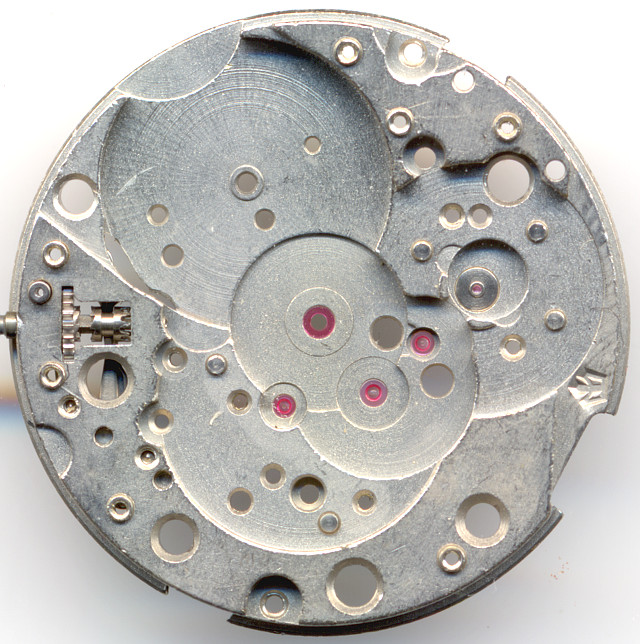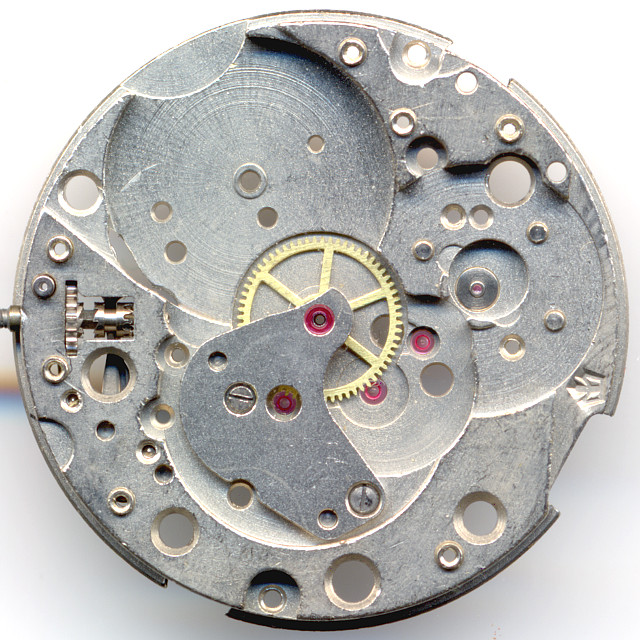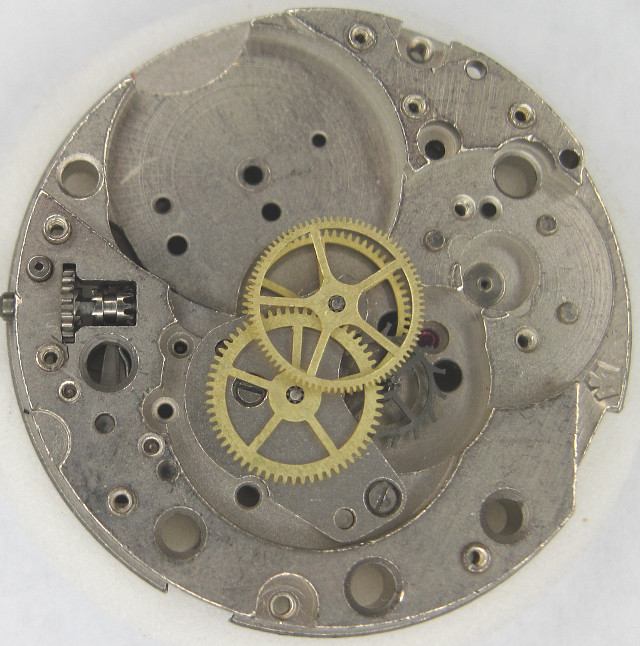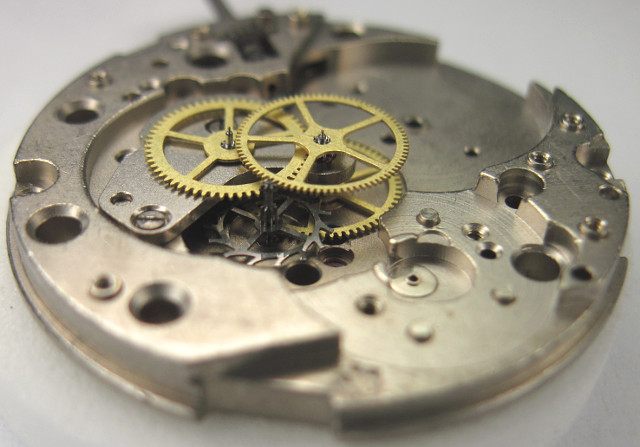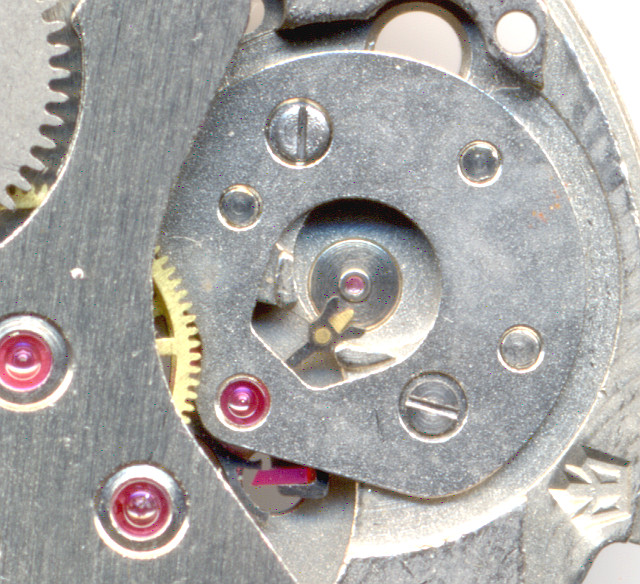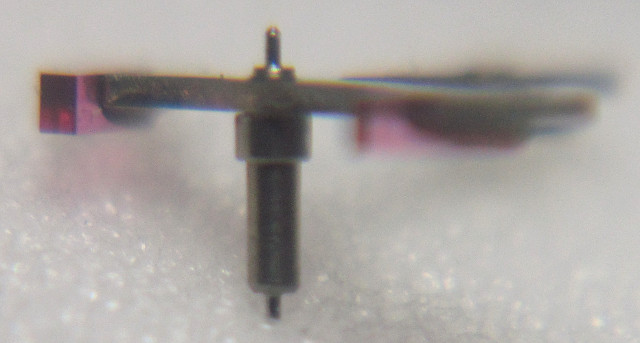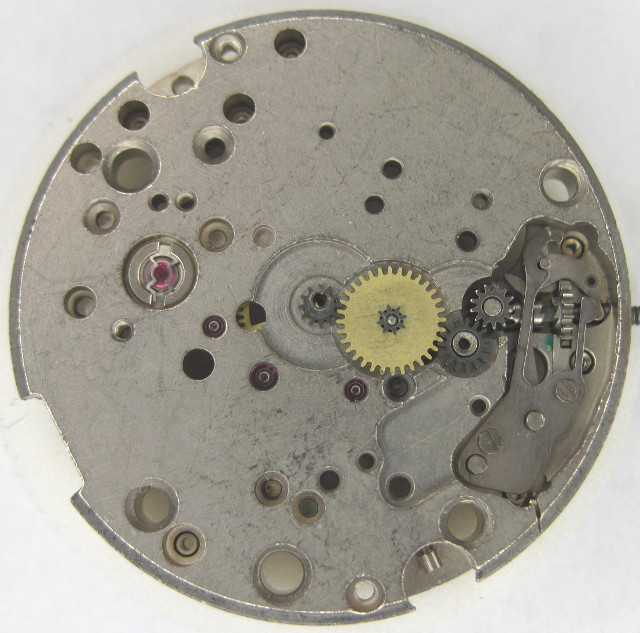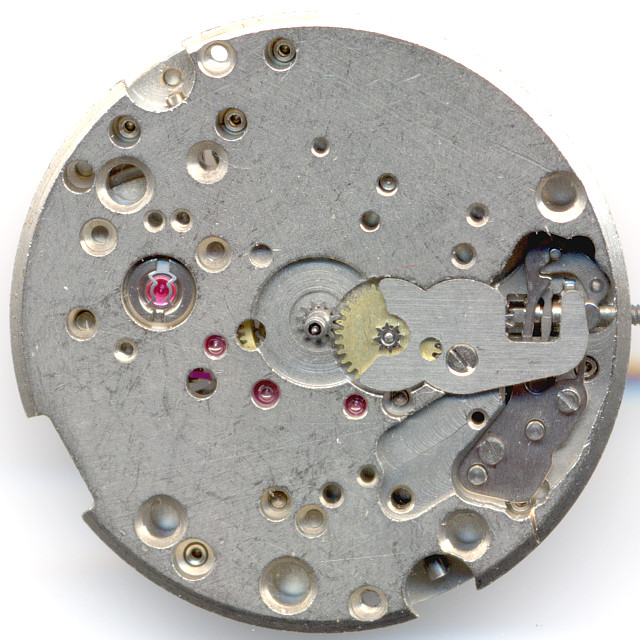Description
In the 1970ies, Poljot launched the caliber 2609.H. It was the first major modification (denoted by the suffix “H”) of the Poljot 2609, which was not overly successful and/or too expensive in production.
The term “modification” is a little bit misleading here, since it was a complete new construction, on which hardly any part remained untouched. Only the diameter (26mm) and the functions remained the same and that was the reason, why the caliber number 2609 (the code for 26mm diameter, center second, shock protection) hat to be used. For not mixing those two movements and their parts, it got the suffix “H”.
This movement was much more successful than its predecessor and you can find it from time to time in non russian watches, too. Its rugged construction and its probably low order price made it interesting for resellers, which wanted to offer good pallet lever movements in lower priced watches.
On this movement, all important bearings with the exception of the small turning mainspring barrel are equipped with synthetic rubies.
In the 1970ies, directly driven minute hands were no longer state of the art, but that classical construction allows any watchmaker to easily repair the movement.
The gear train is also a very classical construction: Mainspring barrel, directly driven center minute, third wheel, directly driven center second and escapement wheel.
The three-leg anular balance is beared in two inhouse Poljot shock protections. It beats contemporarily medium-fast with 21600 A/h and so faster than its predecessor, the Poljot 2609. The balance controls a conventional pallet lever movement of swiss type.
The Poljot 2609H uses a rather odd mechanism to adjust the height of the balance cock: Between it and the base plate, there are more or less (both, two and three were already observed) very flat metal sheets, either gilt color or dark.
The upper lever bearing, which is a 360° bridge is much more professional and ensures good stability.
The lever builds unusually high for a pallet lever movement. Its lower axle is especially long, since the lower (dial side) bearing it deep down on the base plate.
The setting lever is not screwed, but a spring construction.
On the dial side, you see the yoke winding system and the cover of the changing wheel, which also saves (but against what?) the yoke winding system.
In the lab
Timegrapher result
| horizontal positions | |||
|---|---|---|---|
| dial up | +20 s/d | 255° | 0.3ms |
| dial down | +15 s/d | 240° | 0.2ms |
| vertical positions | |||
| crown right (12 up) | +24 s/d | 223° | 0.2ms |
| crown up (3 up) | +17 s/d | 203° | 0.2ms |
| crown left (6 up) | +20 s/d | 232° | 0.3ms |
| crown down (9 up) | +11 s/d | 224° | 0.3ms |
Technical data
| Manufacturer: | Poljot |
| Caliber: | 2609.H |
| Caliber base: | Poljot 2609.H |
| Size: | 11 1/2''' (measured: 25,8mm) |
| Height: | 4,00mm |
| A/h: | 21600 |
| lift angle: | 51° |
| Number of jewels: | 17 |
| Escapement: | Pallet lever |
| Balance types: | Nickel anular balance |
| Shock protection(s): | Poljot |
| Balance bearing / direction hairspring: | Clockwise |
| Moveable stud: | yes |
| Adjust mechanism: | Hairspring key |
| Construction: |
|
| Winding mechanism: | yoke winding system |
| Setting lever spring: | 2 hole(s) |
| Features: |
|
| Inventory number: | 17017 |
